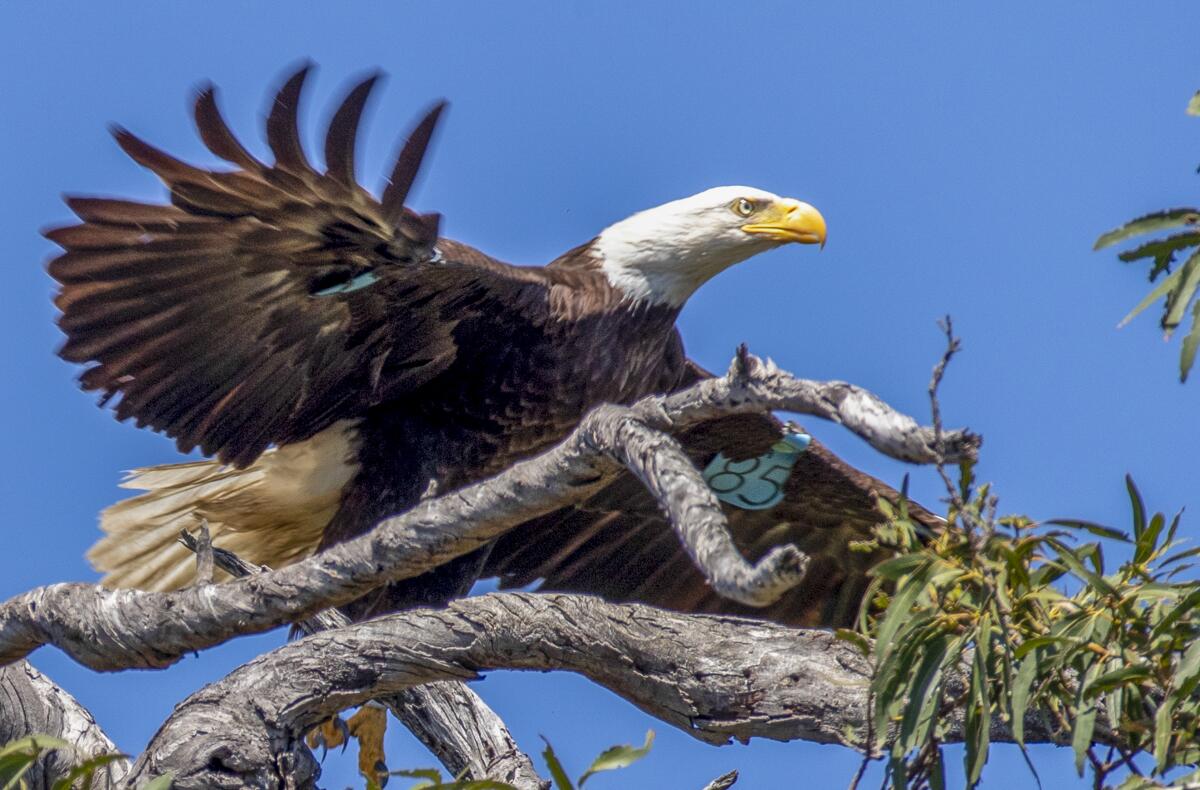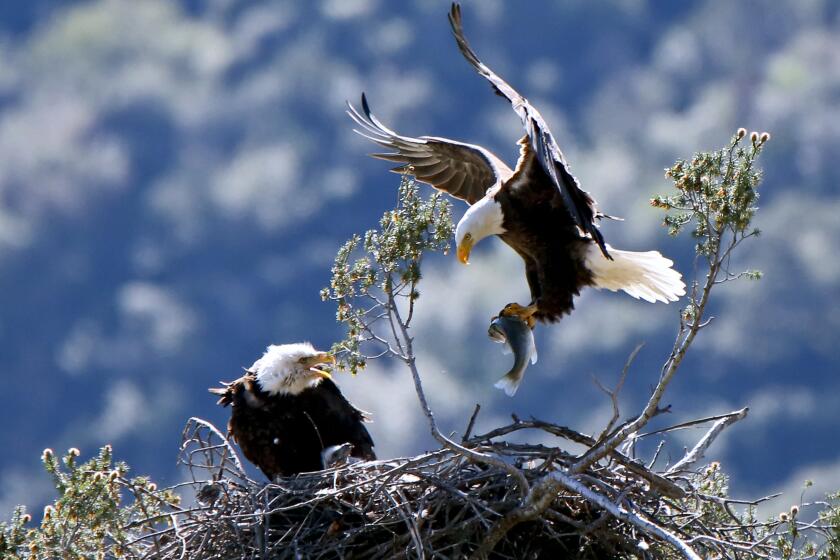In what is hailed as a conservation success story, bald eagle numbers have soared

- Share via
The number of bald eagles — a species that once came dangerously close to extinction in the United States — has more than quadrupled over the last dozen years despite massive declines in overall bird populations, government scientists announced Tuesday.
A new survey by the U.S. Fish and Wildlife Service found that since 2009, when the last count was taken, the number of eagles had soared to an estimated 316,700 in the lower 48 states. At the species’ lowest point in the 1960s, there were fewer than 500 nesting pairs in those states.
Though bald eagles have been steadily recovering, the latest figures surprised even scientists who study avian populations.
At a news conference Tuesday, Interior Secretary Deb Haaland celebrated the findings as evidence that species vulnerable to extinction can be rescued by government intervention, a departure from the Trump administration’s efforts to significantly weaken the Endangered Species Act.
Although the bald eagle was removed from the endangered list in 2007, conservationists credit much of the population’s recovery to decades of protection from federal regulations that made it illegal to hunt the birds.
“I know that the previous administration took steps to undermine key provisions of the Endangered Species Act,” Haaland said. “We will be taking a close look at all of those revisions and considering what steps to take.”
Deb Haaland’s confirmation as the first Native American to lead the Interior Department inspires new hope among California’s Indigenous leaders.
Some of the increase may be due to the Fish and Wildlife Service’s new method of counting the birds. The agency has long used aerial surveys to monitor the species, but its latest update includes crowdsourced data from the online ornithological database eBird.
About 180,000 bird watchers around the nation reported their bald eagle sightings to the database, according to Amanda Rodewald, senior director for avian population studies at the Cornell Lab of Ornithology, which maintains eBird. Those sightings provided government scientists with an entirely new view of the species, particularly in parts of the country that aren’t easily surveyed from above.
Though there’s no way to know for sure how much of the growth is because of the crowdsourced data, said Brian Millsap, national raptor coordinator for the Fish and Wildlife Service, the latest estimates line up with other survey data.
“While the eBird data has improved the estimates, the vast majority of this increase really is attributed to bald eagle population growth,” Millsap said.
There were once thought to be as many as half a million bald eagles in North America, but hunting, habitat destruction and DDT poisoning put the species’ survival in doubt. By 1963, only 417 mating pairs were documented in the lower 48 states.
The species was added to the added to the list of threatened and endangered species in 1967.
Bald eagles are choosing to nest close to human activity, but no one knows why.
When the federal government released its last population estimate, which used data from 2009, there were believed to be just over 72,400 birds.
The eagle’s comeback is something of an outlier. Across the U.S. and Canada, the number of birds has fallen by 3 billion, or 29%, over the last 50 years, according to a survey of more than 500 species.
In recent years, the booming eagle population has led the birds to increasingly take up residence in more urban areas.
A pair of bald eagles nested in a pine tree on the side of Highway 39 in the San Gabriel Mountains in 2019, drawing crowds of enthusiastic and sometimes overly aggressive bird watchers. That year, about 200 “urban eagles” found a home in Seattle suburbs, where they created a headache for residents who accused the birds of dropping trash scavenged from a nearby landfill into their yards.











